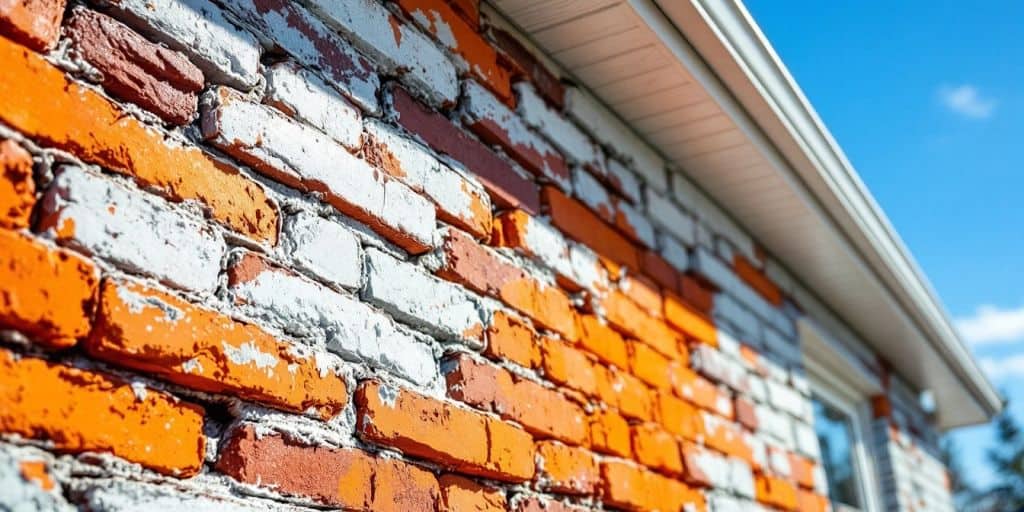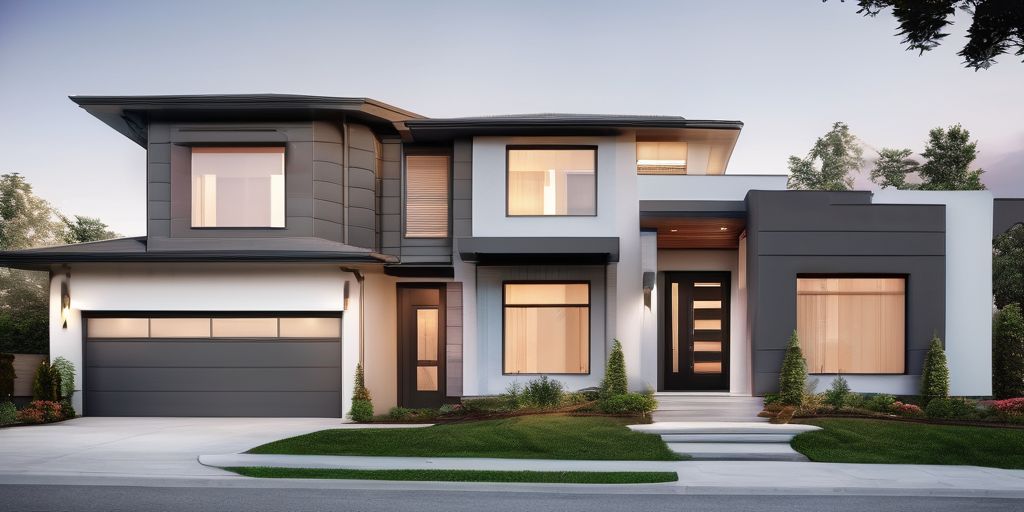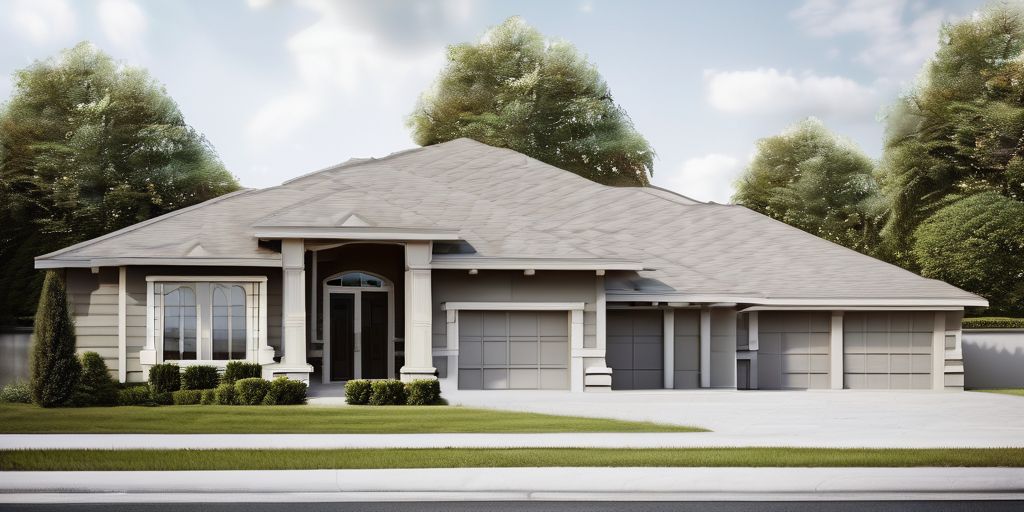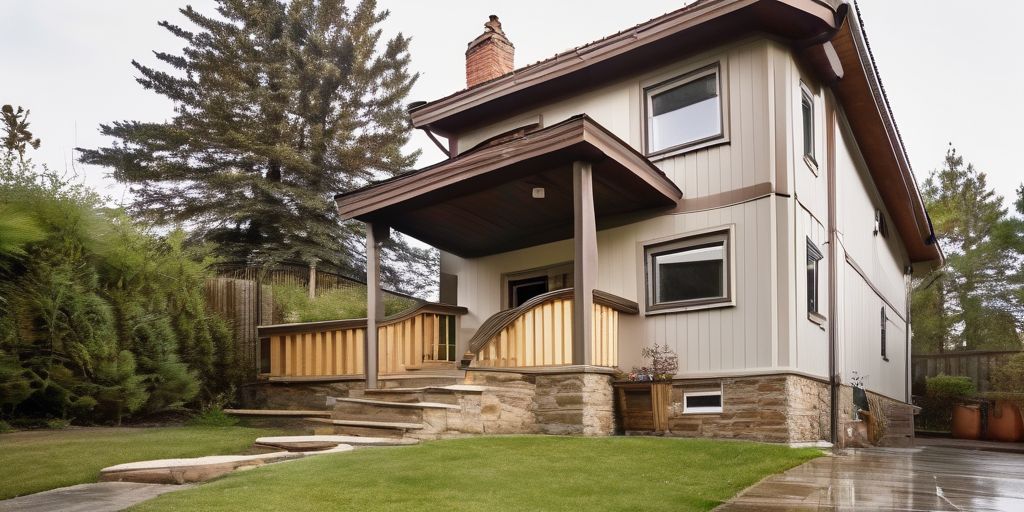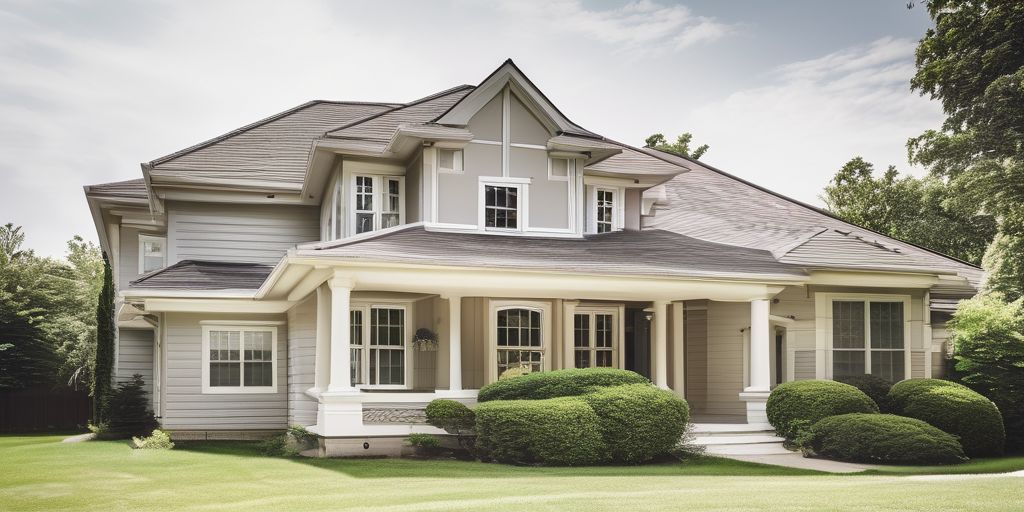This article explores how seasonal temperatures affect the paint on exterior brick homes in St. Catharines. Understanding these effects can help homeowners make better choices for painting and maintaining their properties. From the best times to paint to tips for selecting the right paint, we will cover everything you need to know to keep your brick looking great throughout the year.
Key Takeaways
- Weather changes can impact how long paint lasts on brick.
- The best times to paint are usually in spring and fall when temperatures are mild.
- Using eco-friendly paints can help protect the environment and improve your home’s look.
- Regular maintenance can prevent problems like peeling and fading from the weather.
- Choosing the right colors and finishes can balance beauty and durability.
Understanding Seasonal Paint Effects on Exterior Brick
How Temperature Fluctuations Impact Paint
Temperature changes can greatly affect the paint on your exterior brick. Here are some key points to consider:
- Extreme heat can cause paint to dry too quickly, leading to cracks.
- Cold temperatures can make the paint brittle, increasing the chance of peeling.
- Seasonal shifts can cause the brick to expand and contract, which may damage the paint layer.
The Role of Humidity in Paint Durability
Humidity plays a crucial role in how well paint lasts on brick. Here’s what you should know:
- High humidity can lead to moisture retention, causing paint to bubble and peel.
- Low humidity is ideal for painting, as it allows for better adhesion and drying.
- Regular maintenance is essential to combat humidity effects, especially in areas like St. Catharines, where weather can be unpredictable.
Effects of Seasonal Rains on Painted Brick
Seasonal rains can have a significant impact on your painted brick. Consider these points:
- Moisture from rain can seep into the brick, leading to paint damage.
- Regular inspections after heavy rains can help catch issues early.
- Using water-resistant paints can protect against moisture damage and prolong the life of your paint job.
By understanding the impact of weather on your painted brick, you can take steps to ensure it remains beautiful and durable for years to come.
Optimal Seasons for Painting Exterior Brick in St. Catharines
Best Times of Year to Paint
When it comes to painting your exterior brick, timing is everything! The best times to tackle this project in St. Catharines are late spring and early fall. During these seasons, you can expect:
- Mild temperatures (around 50°F to 85°F)
- Lower humidity levels
- Overcast skies, which help prevent direct sunlight from affecting the paint
Weather Conditions to Avoid
To ensure a successful paint job, it’s important to avoid certain weather conditions:
- Extreme heat (above 85°F) can cause the paint to dry too quickly, leading to an uneven finish.
- Cold and wet conditions can prevent proper adhesion, making the paint less durable.
- High humidity can also affect drying times and the overall finish.
Tips for Planning Your Painting Project
Here are some helpful tips to keep in mind when planning your painting project:
- Check the weather forecast regularly to choose the best days.
- Prepare your surfaces by cleaning and repairing any damage before painting.
- Consider local landmarks like the beautiful Brock’s Monument as inspiration for your color choices, ensuring your home blends well with the surroundings.
Remember, planning your painting project around the right seasons can lead to a more beautiful and long-lasting finish!
Choosing the Right Paint for Different Seasons
When it comes to painting exterior brick, selecting the right paint for the season is crucial. Different weather conditions can affect how well the paint adheres and lasts. Here’s a simple guide to help you choose the best paint for each season:
Eco-Friendly Paint Options
- Look for paints that are low in volatile organic compounds (VOCs). These are better for the environment and your health.
- Consider using paints made from natural ingredients, which can be safer and more sustainable.
- Check for certifications like Green Seal or Energy Star to ensure you’re making an eco-friendly choice.
Paints for Hot Weather
- Choose paints with high UV resistance to prevent fading.
- Opt for quick-drying formulas to avoid issues with humidity.
- Light colors can reflect heat, helping to keep your home cooler.
Paints for Cold Weather
- Select paints designed for low temperatures to ensure proper adhesion.
- Look for options that can withstand moisture and prevent freezing.
- Darker colors can absorb heat, which may help in colder months.
Remember, proper preparation is key to achieving a long-lasting finish. Take the time to clean and protect the surface before painting.
| Season | Recommended Paint Type | Key Features |
|---|---|---|
| Summer | UV-resistant, quick-drying | Reflects heat, prevents fading |
| Winter | Cold-weather formula | Moisture-resistant, good adhesion |
| Spring | Versatile, adaptable | Works in fluctuating temps |
| Fall | Durable, weatherproof | Prepares for winter conditions |
By understanding the unique needs of each season, you can ensure your exterior brick painting project in St. Catharines is a success!
Maintenance Tips for Painted Brick in Various Climates
Routine Inspections and Touch-Ups
Regular checks on your painted brick are essential to keep it looking great. Here are some tips:
- Inspect for cracks or peeling paint at least twice a year.
- Look for signs of moisture retention, especially after heavy rains.
- Touch up any areas that need it to prevent further damage.
Protecting Against UV Damage
UV rays can fade your paint over time. To protect your brick:
- Use UV-resistant paints to maintain color.
- Consider adding a protective coating every few years.
- Shade your brick with plants or awnings to reduce direct sunlight exposure.
Long-Term Care Strategies
Taking care of your painted brick is a long-term commitment. Here are some strategies:
- Clean the surface regularly to remove dirt and mildew.
- Repaint every 3-5 years to keep it fresh.
- Use moisture barriers to prevent water damage.
By following these maintenance tips, you can ensure your painted brick remains beautiful and durable, even in the changing weather of St. Catharines.
Common Weather-Related Paint Issues and Solutions
Preventing Paint Peeling
Paint peeling is a common issue that can occur due to various weather conditions. Here are some tips to help prevent this problem:
- Choose the right paint: Use high-quality, moisture-resistant paint.
- Check the weather: Avoid painting during rainy or extremely humid days.
- Ensure proper surface prep: Clean and dry the surface thoroughly before painting.
Dealing with Moisture Retention
Moisture can cause significant damage to painted brick. To manage this issue:
- Use moisture-resistant paint: This helps protect against humidity.
- Ventilate the area: Ensure good airflow to reduce moisture buildup.
- Monitor the weather: Keep an eye on forecasts to avoid painting in wet conditions.
Addressing Cracks and Fading
Cracks and fading can occur due to temperature changes and UV exposure. Here’s how to tackle these issues:
- Inspect regularly: Check for cracks and fading, especially after seasonal changes.
- Apply touch-ups: Fix any damaged areas promptly to prevent further issues.
- Consider UV-resistant paint: This can help maintain color and prevent fading over time.
Tip: Regular maintenance is key to keeping your painted brick looking fresh and vibrant, especially near landmarks like the Welland Canal in St. Catharines.
By following these guidelines, you can effectively manage common weather-related paint issues and ensure your exterior brick remains beautiful and durable for years to come.
Balancing Aesthetics and Durability in Exterior Brick Painting
When it comes to painting your exterior brick, finding the right balance between looks and durability is key. Choosing the right colors and materials can enhance your home’s charm while ensuring it stands the test of time. Here are some important points to consider:
Choosing the Right Colors
- Bold vs. Neutral: Bright colors can make your home pop, while neutral tones offer a classic look.
- Surroundings Matter: Think about how your color choice fits with the neighborhood and nearby landmarks, like the beautiful Welland Canal.
- Lighting Effects: Colors can look different in various lighting, so test samples at different times of the day.
Considering Environmental Impact
- Eco-Friendly Options: Look for paints that are low in VOCs to protect both your health and the environment.
- Sustainable Practices: Choose brands that focus on sustainable production methods.
- Proper Disposal: Always dispose of leftover paint responsibly to avoid harming the ecosystem.
Achieving a Long-Lasting Finish
- UV Protection: Use paints that offer UV protection to prevent fading and maintain vibrant colors.
- Surface Preparation: Properly clean and prime the brick before painting to avoid issues like peeling. This is crucial because, contrary to popular belief, a painted brick exterior can be easier to maintain than bare brick, especially when using high-quality paint designed for masonry.
- Routine Maintenance: Regularly inspect your painted brick for signs of wear and perform touch-ups as needed.
Balancing aesthetics with durability is essential for a successful painting project. Thoughtful choices can enhance your home’s beauty while ensuring it remains protected from the elements.
By keeping these factors in mind, you can create a stunning and resilient exterior that reflects your personal style while standing strong against the changing seasons.
Professional Advice for Painting Exterior Brick
When to Hire a Professional
Hiring an exterior painter can save you time and ensure a high-quality finish. Here are some reasons to consider:
- Expertise: Professionals know the best techniques and materials.
- Safety: They have the right equipment to work safely at heights.
- Efficiency: A team can complete the job faster than DIY.
Benefits of Expert Consultation
Consulting with a professional can provide valuable insights:
- Personalized Recommendations: Tailored advice based on your home’s needs.
- Access to Quality Materials: Professionals often have access to better products.
- Long-Term Solutions: They can suggest maintenance strategies to prolong the life of your paint.
Finding the Right Painting Service in St. Catharines
When looking for a painting service, consider these tips:
- Check Reviews: Look for feedback from previous clients.
- Ask for Quotes: Get estimates from multiple services to compare.
- Verify Credentials: Ensure they are licensed and insured.
Choosing the right professional can make a significant difference in the outcome of your project. Whether you’re near the beautiful Welland Canal or in another part of St. Catharines, a skilled painter can help you achieve the look you desire while ensuring durability against the elements.
By understanding the impact of weather on painting exterior brick, you can make informed decisions that enhance both the beauty and longevity of your home.
If you’re thinking about painting your exterior brick, it’s important to get the right advice. Start by cleaning the surface well to help the paint stick. Choose a high-quality paint that can handle the weather. Don’t forget to protect your plants and windows while you work. For more tips and to see how we can help you transform your home, visit our website today!
Conclusion
To wrap things up, painting the outside of your brick home is all about finding the right balance between how it looks and how it affects the environment. A new coat of paint can really brighten up your house, but it’s important to pick paints that are good for the planet and have low levels of harmful chemicals. Knowing how different weather conditions can change your paint job is also key to making it last longer and needing less upkeep. By keeping these points in mind, you can achieve a stunning and long-lasting finish that will keep your home looking great for years. Remember, careful planning and smart choices can really help maintain the beauty and strength of your brick home.
Frequently Asked Questions
How does the weather affect the lifespan of paint on my brick?
Weather plays a big role in how long the paint lasts on your brick. Hot and dry weather can cause the paint to crack and peel, while cold and wet weather can lead to moisture problems and damage. Seasonal changes can also affect how well the paint holds up.
What are some eco-friendly paint choices for brick?
Eco-friendly paint options for brick include low VOC paints and those made from natural materials. These types of paints are better for the environment and safer for your health.
When is the best time to paint my brick house?
The best time to paint your brick house is during mild weather, usually in spring or fall. Avoid painting when it’s too hot or humid to get the best results.
How can I protect my painted brick from weather damage?
To protect your painted brick, use moisture barriers and UV-resistant paints. Regular maintenance, like checking for damage and doing touch-ups, can help keep your paint looking good for longer.
What are the benefits of using eco-friendly paints?
Eco-friendly paints have many benefits, such as lower levels of harmful chemicals, less impact on the environment, and better air quality indoors. They are often made from sustainable materials.
How do I take care of my painted brick in different climates?
Taking care of painted brick in different climates means checking for damage regularly, doing timely touch-ups, and having long-term care plans. Fixing issues like moisture and sun exposure quickly can help your paint last.

